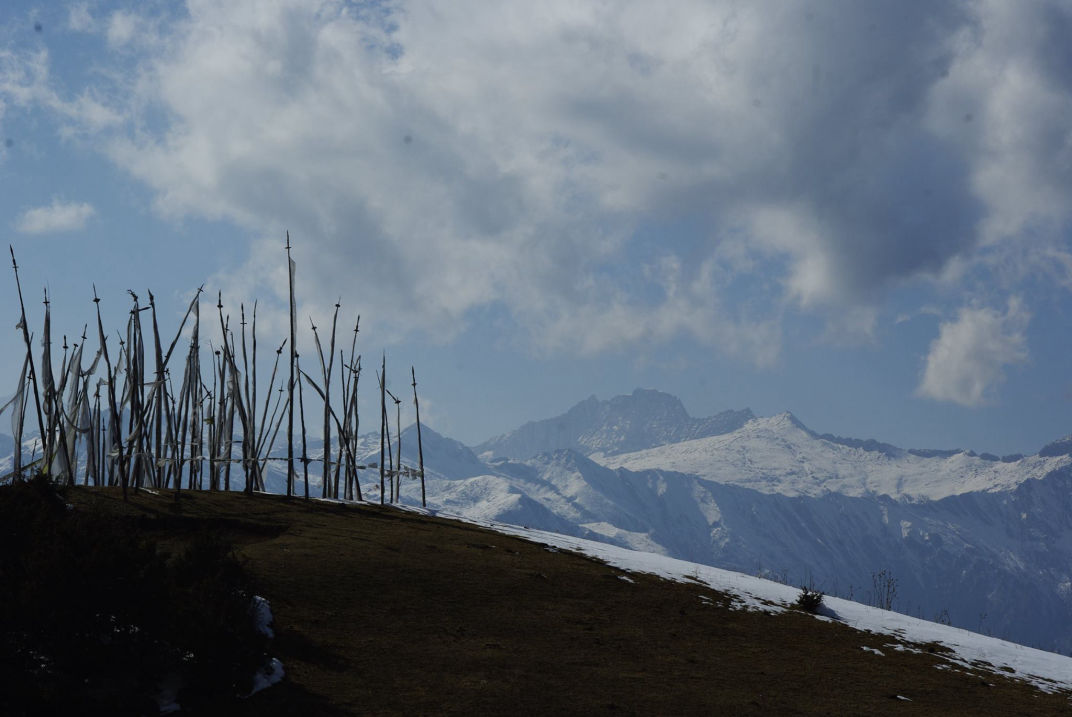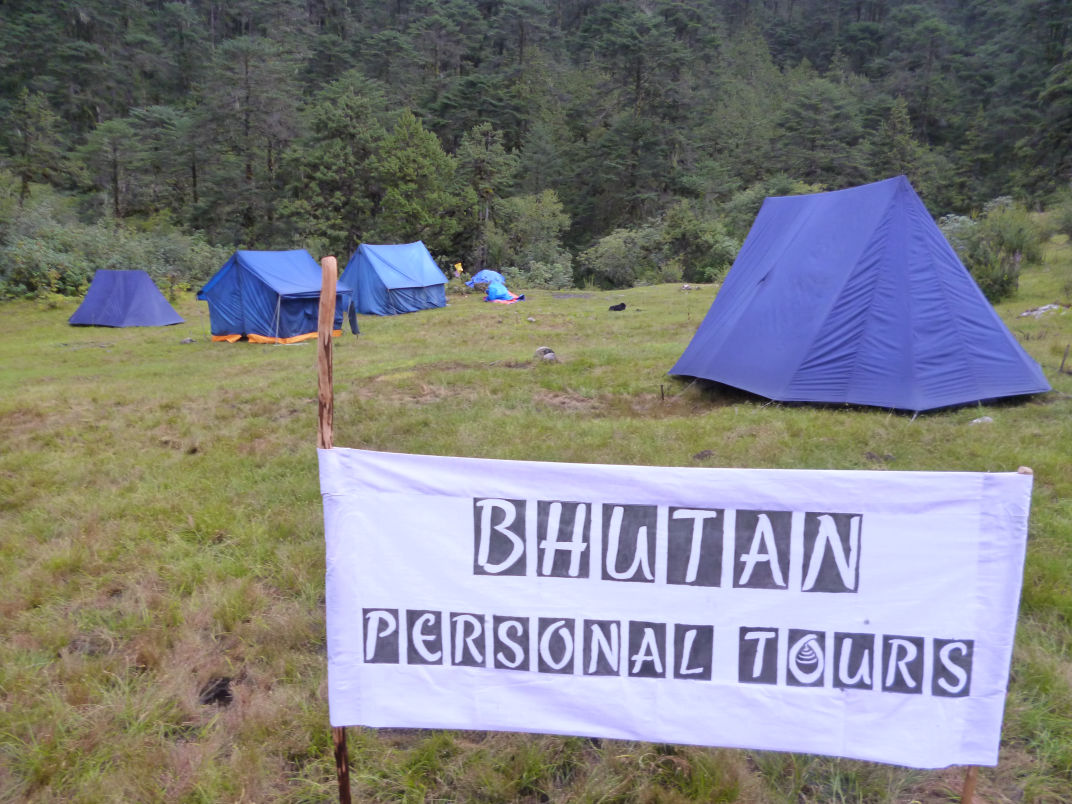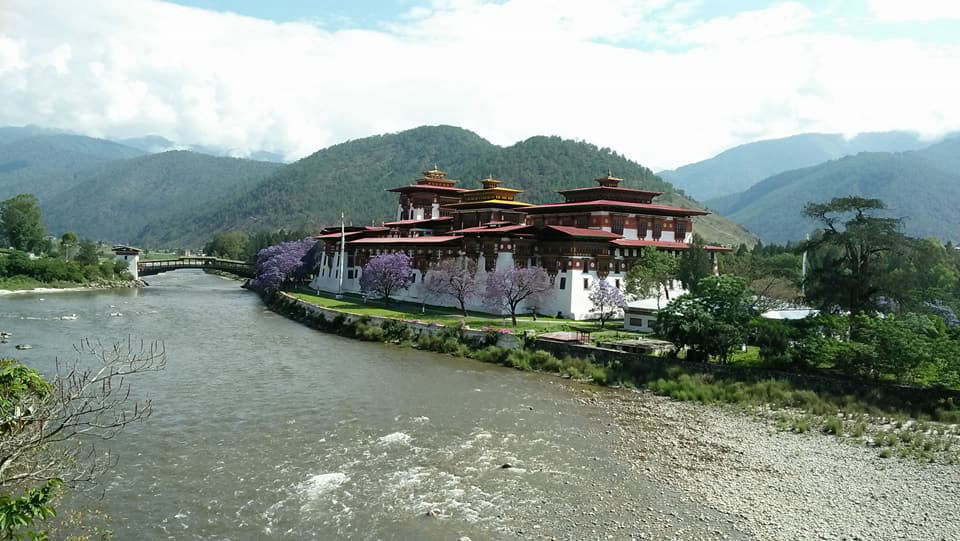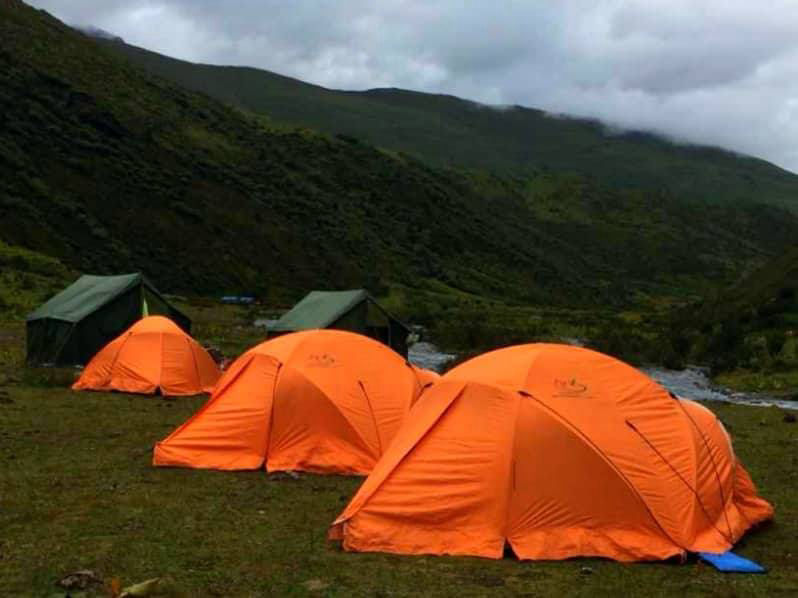Drukgyel Dzong - Sharna Zampa
(Distance 17km, 4 to 5 hours, 360m ascent, 80m descent, camp altitude 2,850m).
Drive up to Drukgyel Dzong (2,580m) where the road ends and the trek begins. With a gradual climb the trail follows the Paro Chhu passing beautiful meadows, paddy fields and impressive farm houses. After about four hours you will reach the army post at Gunitsawa village. At the army checkpost your trek permit (provided by your tour operator) will be checked and endorsed. The campsite is on the opposite side of the river, not far from Gunitsawa.



